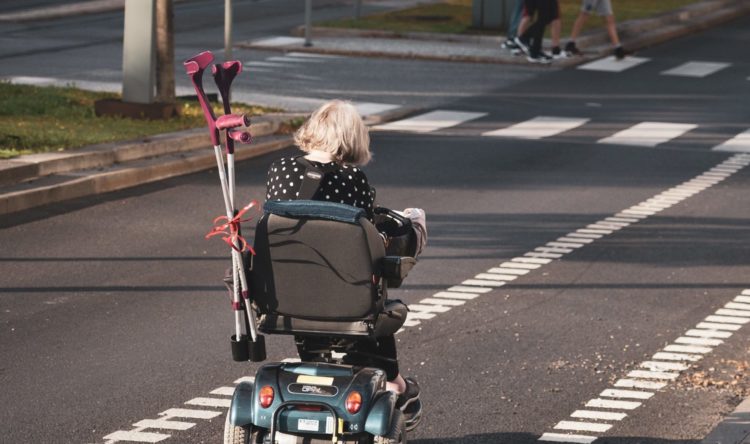Our dangerous roads
Revealing Britain's most crash prone roads
Published on August 4, 2021
An incident can happen on any road. You could be flying down the motorway or on your own on a country lane without another car in sight. But where do the most crashes occur?
Many would think that busier and faster roads in more densely populated areas would have the most crashes. But is it true?
Moneymaker have done their own analysis of official data from the DfT.
The areas with the most road crashes
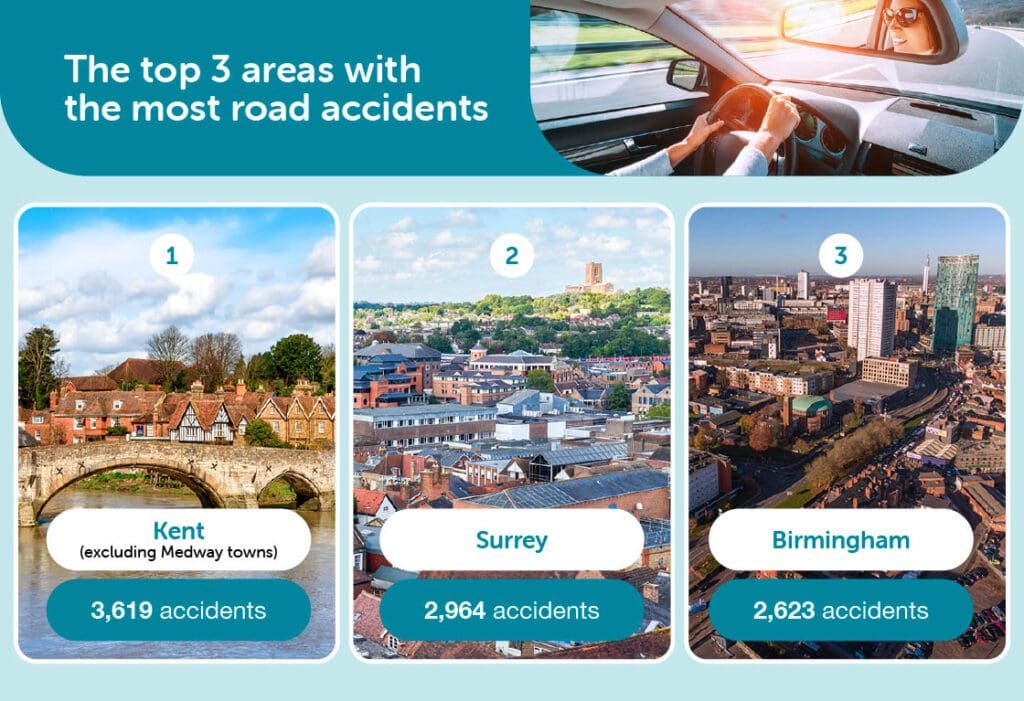
Kent (excluding Medway towns) – 3,619 crashes
The southeastern county of Kent had the most crashes in 2019 by some distance, with 3,619 in total.
While this figure excludes the Medway towns such as Gillingham and Rochester, Kent is still one of the most heavily populated counties in the country, with lots of traffic heading not just to the towns above, but also into London.
Surrey – 2,964 crashes
Another of the home counties had the second-highest number of incidents, this time Surrey, with 2,964 taking place in 2019.
Like Kent, Surrey is a fairly well-populated county but with large rural areas, as well as lots of commuters, all of which could contribute to the high number of crashes.
Birmingham – 2,623 crashes
The urban area with the highest number of crashes is Birmingham, which is the UK’s second-most-populated city with over 1.1 million people, hence there are a lot of people on the move, and there were 2,623 reported crashes in Birmingham in 2019.
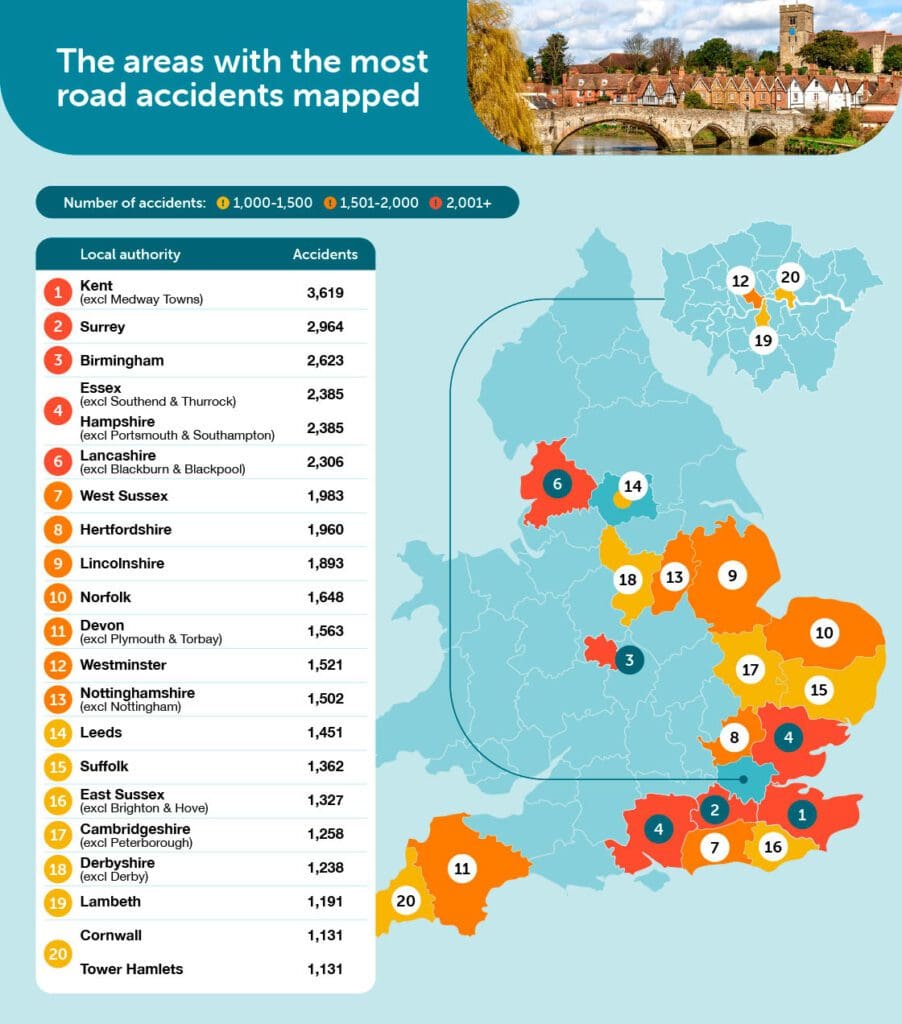
What types of roads do crashes take place on?
So, while we know the specific parts of the country that see the most crashes, what are the characteristics of roads that make these places more or less dangerous?
Firstly, we took a look at whether you’re more likely to crash in an urban or rural area, with the figures showing that there are actually twice as many incidents in built-up areas than in the countryside.
While this makes sense, with there usually being more vehicles on the roads, it’s worth noting that those crashes that do take place on rural roads are usually likely to be more serious, rather than just a small bump that you might get in a town or city.
Similarly, over three quarters of crashes take place on ‘built up’ roads, which refers to roads in settled areas with street lights and a speed limit of 30 mph, while just 19.1% occurred in non built up areas and as few as 3.5% on motorways.
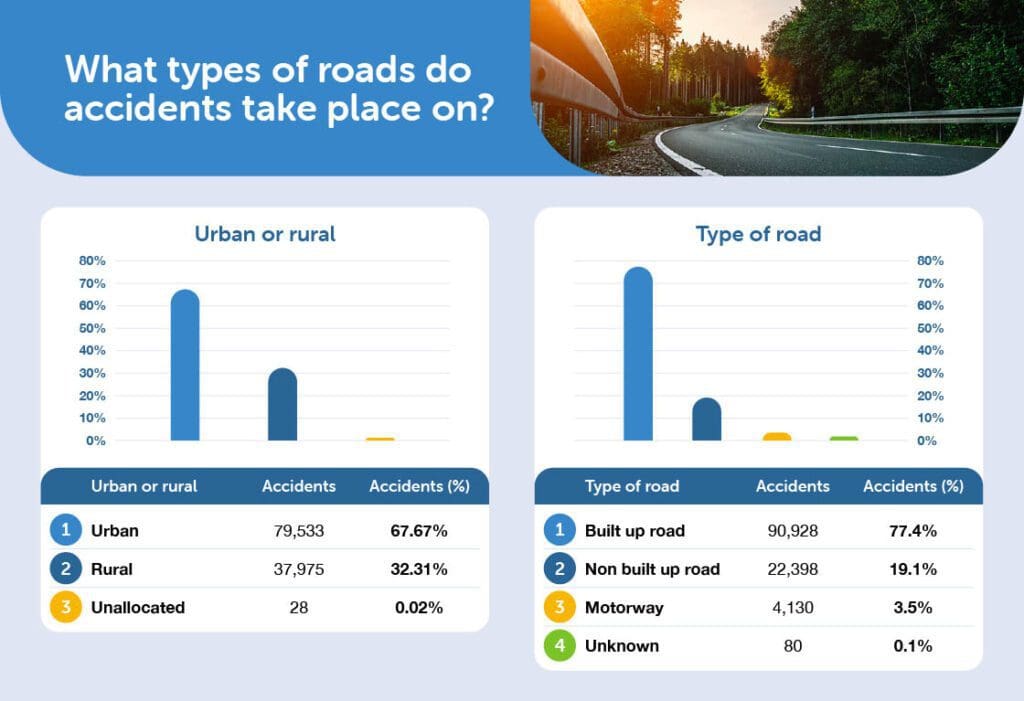
Looking at the specific classes of roads in the UK, we already know that motorways see a relatively low number of crashes given how much traffic they carry, so which roads are incidents actually taking place on?
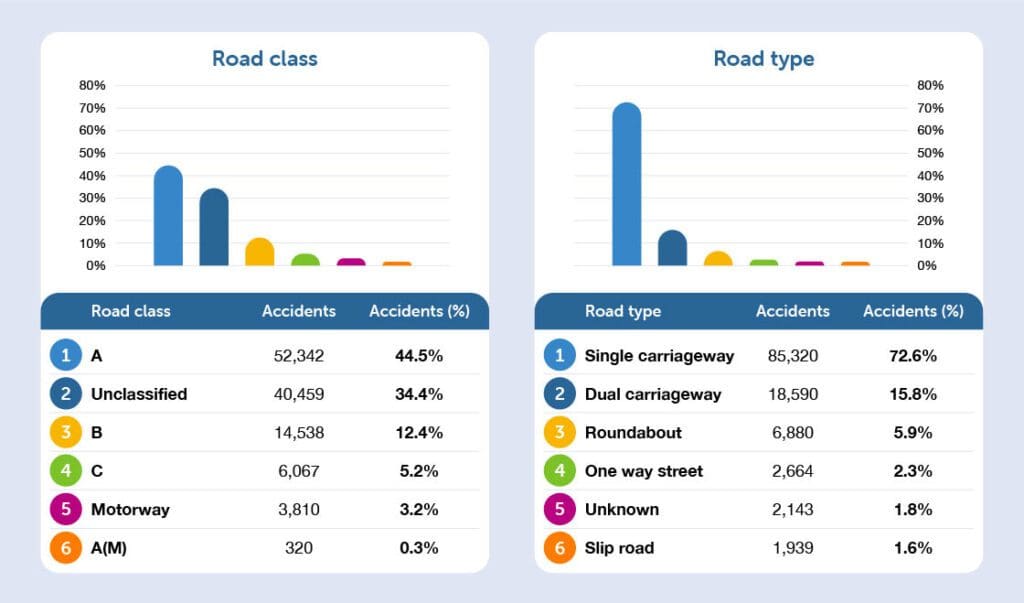
A roads see the most, with 44.5%, followed by unclassified roads which are smaller local roads (34.4%) and B roads (12.4%).
The majority of crashes (72.6%) take place on single carriageway roads, with just 15.8% on dual carriageways.
The speeds at which most accidents happen
While you might think that roads with higher speed limits, such as motorways, would see the most crashes, the opposite is actually true, with the majority of all incidents (58.9%) actually falling within the 21-30 mph bracket, while it was roads with speed limits up to 70 mph that actually had the fewest crashes, showing that there are many more factors at play than just speed.
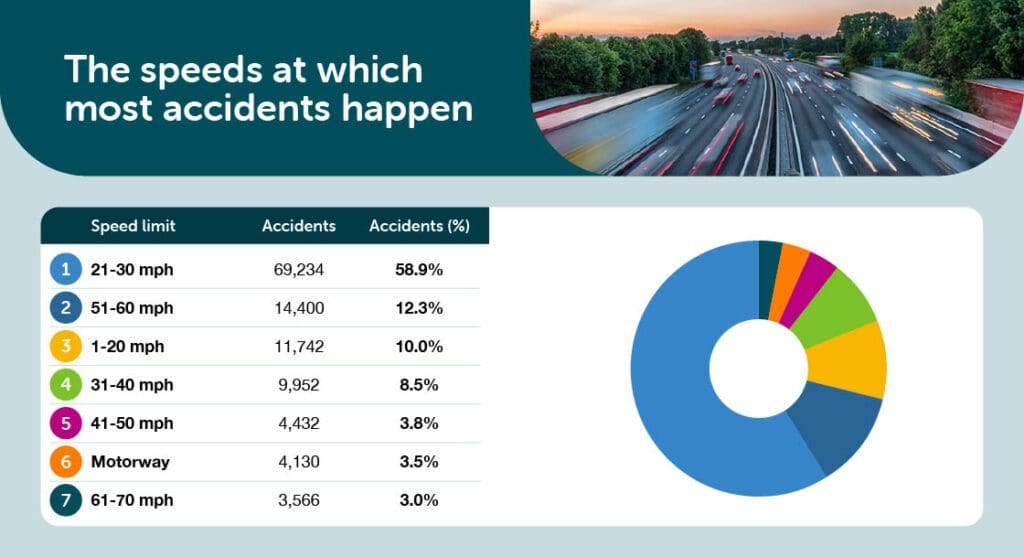
The junction types with the most crashes
Over half of all crashes (58%) occur at junctions, so which are the most dangerous? With around three times as many accidents as any other type of junction, the answer is the T or staggered junction, with over 33,000 incidents, making up around 29% of crashes.
These junctions see a minor road connect to a major road, with these roads being slightly offset in the case of the staggered junction.
This was followed by the standard crossroad junction (9.55%) and the dreaded roundabout (7.81%).
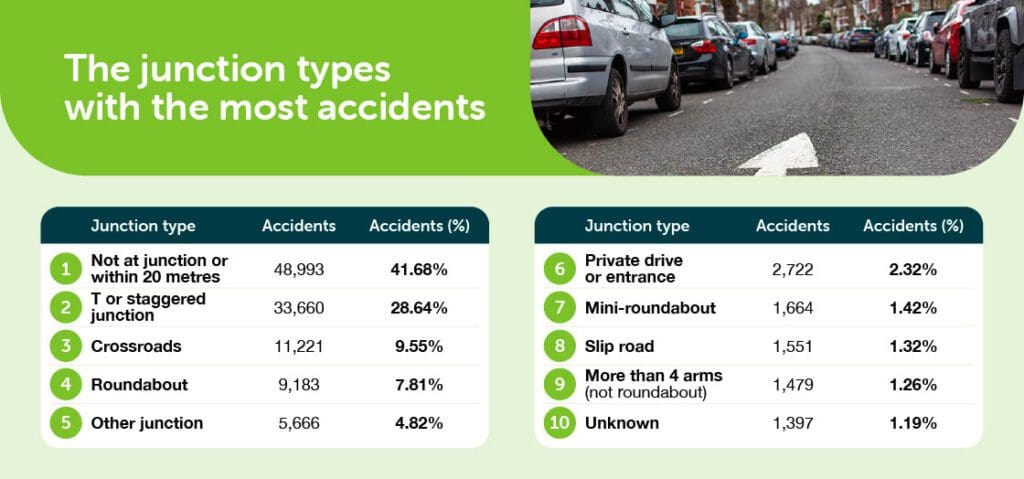
Methodology
All figures sourced using the Department for Transport’s road traffic statistics road safety data download tool and refer to road accidents reported to the police in 2019 where at least one person is injured (there can be several casualties in one accident).
Read the original Moneybarn article here.



